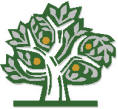- Alan Truman
- Albert Harrison
- Ambrose O'Halloran
- Andrew Hall
- Bob Chapman
- Bob Neill
- Clive Brooks
- Colin Fishwick
- David Lowe
- David Springett
- Gary Rance
- George Bell
- Gerry Marlow
- Ian Clarkson
- Joe Laird
- Joey Richardson
- John Berkeley
- Ken Allen
- Les Thorne
- Margaret Garrard
- Mark & Lisa Raby
- Mark Baker
- Mark Hancock
- Martin Pidgen
- Mick Hanbury
- Nick Agar
- Nick Arnull
- Nikos Siragas
- Paul Jones
- Phil Irons
- Philip Greenwood
- Peter Berry
- Peter Wood
- Richard Findlay
- Robin Wood
- Russell Kebble
- Sarah Thirlwell
- Simon Hope
- Simon Whitehead
- Steve Wright
- Stuart King
- Sue Harker
- SWC Club Members
- Tony Wilson
- Tracy Owen
- Walt Claxton
- Walt Claxton & Tom Allison
Sarah Thirlwell 8 April 2010
Sarah Thirlwell is a multi-media turner who teaches woodturning at
Stafford University.
![]()
She turns functional vases from a variety of timbers, high grade birch plywood, acrylics and recycled plastics, including yogurt pots and vending cups. She also works with a variety of other media including pressed sheets of paper such as ‘yellow pages’, old books, magazines etc.; pieces of furniture grade leather and cork bath mats; in fact anything she thinks she might be able to turn she’ll have a go at. She laminates the materials, using PVA glue and each of her vases comes complete with a glass insert which she has hand blown to her requirements.
During the evening Sarah demonstrated a number of techniques, rather
than turning a finished item. She started with a block of clear perspex
measuring approx. 6” (15cm) square by ¾” (20mm) thick which she had
mounted onto a plywood disk by drilling a hole in each corner and attaching
it to the disk with screws. The plywood disk was mounted onto a faceplate
which she used to hold it on the lathe. Using a spindle gouge she turned
a bowl in the centre which she then sanded and polished. She only turned
a small amount to show the affect of turning clear perspex. (See photos
ST01, 02 & 03).
Next she mounted another block of perspex to make a bangle, this
was approx. 10mm thick and was made up of laminated layers of different
coloured pieces. First she parted off a disk from the middle which was
65mm across; she needed to take a break during this process as the tool
and the perspex were both getting very hot. Once the disk had come away
she tidied the inside edge then sanded it with sandpaper followed by
wet and dry, applied a polishing compound to it and buffed it with a
cloth. She parted it off again, this time to the required thickness
for the bangle and mounted it onto some expanding jaws which were made
of a soft compound so the inside wouldn’t be damaged. She suggested
that a home made option would be to expand pin jaws into a disk of wood,
cut to the right size, with a wide rubber band wrapped round it. She
turned a curved edge, first using a spindle gouge then, when she had
a nice smooth surface, she changed to a large roughing out gouge (approx.
1½”) which she uses with a very light touch, like a scraper. When the
first side was finished she turned it round on the chuck and turned
the other side to match. (See photos ST04, 05 & 06).
The next item Sarah mounted on the lathe was a ‘glue-up’ for a vase
that was made from recycled yogurt pots on the bottom half and birch
plywood on the top half. She had made it by cutting disks of the of
the materials to the rough diameter each layer should be and threading
them onto a dowel, gluing each layer to the previous one as she built
up the shape. When the glue was set she had removed it
from the dowel
and mounted a piece of the plywood on the bottom and cut a 16mm hole
through the top to take her glass ‘vial’. She turned the top, plywood
section, first then tidied up the plywood base. Finally she turned the
recycled plastic section, explaining that this is a much softer material
to turn. Again she started turning with a spindle gouge and finished
it with her large roughing gouge. To finish these multi media pieces
Sarah sands them with wet and dry and then uses Chestnut melamine lacquer
on the plywood part and ‘Plastimax’, a plastic polishing compound, on
the recycled section. (See photo ST07).
This was a fascinating demonstration by someone who is a true artist and who is not afraid to try anything. She talked about and demonstrated ideas that were completely new and different to me. You can gain a measure of how good she is by the fact that her work has been displayed at the V & A and she has an order from Heals in Tottenham Court Road for several hundreds of her vases. Thank you Sarah for giving us a whole new look at the world of Woodturning, I look forward to seeing you again one day soon. (See photos ST08 - 13 for some examples of Sarah’s work).
The recycled plastics Sarah uses come from a company called ‘Smile Plastics’ in Liverpool www.smile-plastics.co.uk
SWC club member

